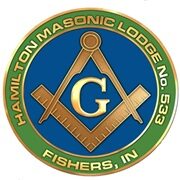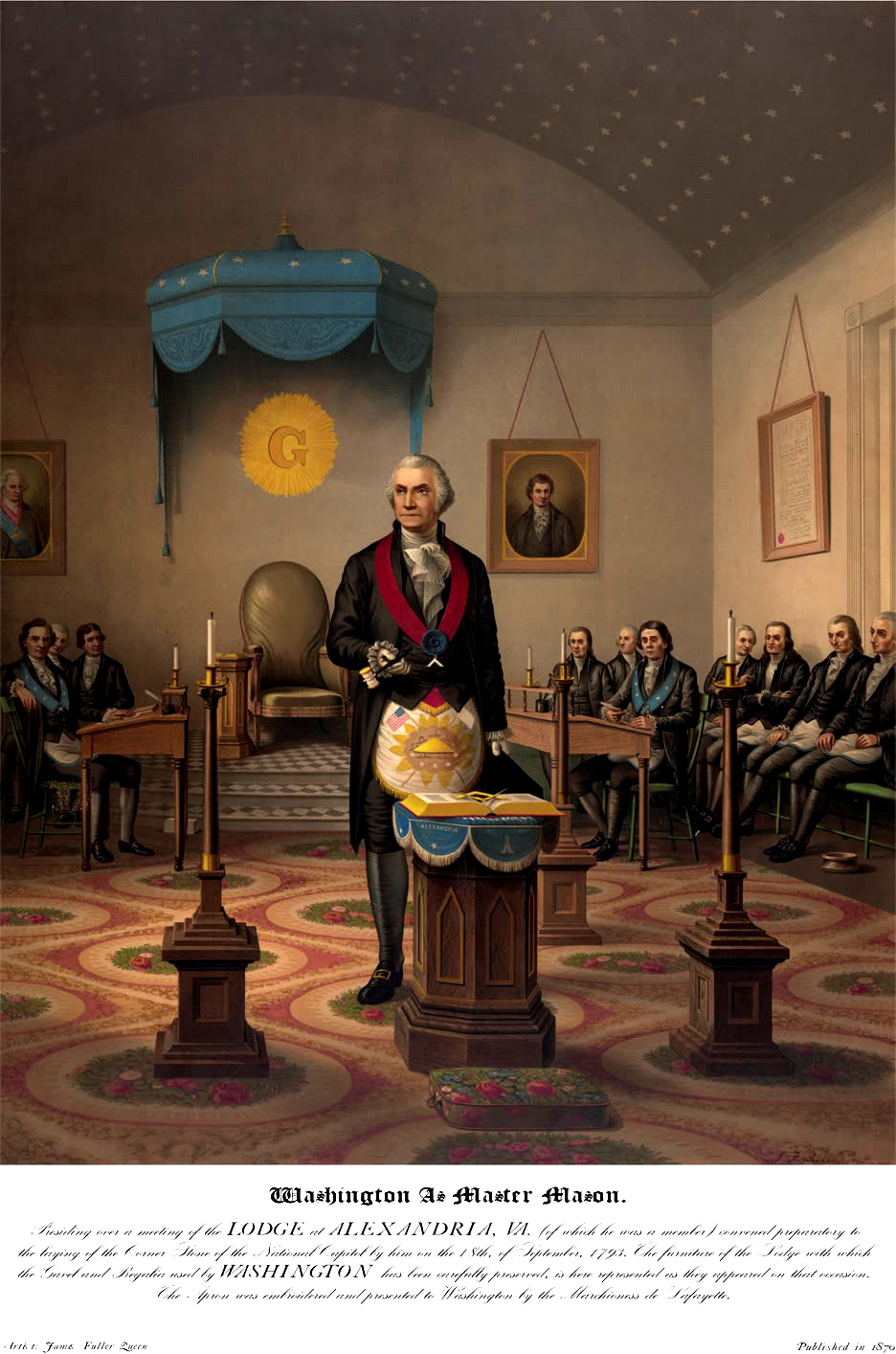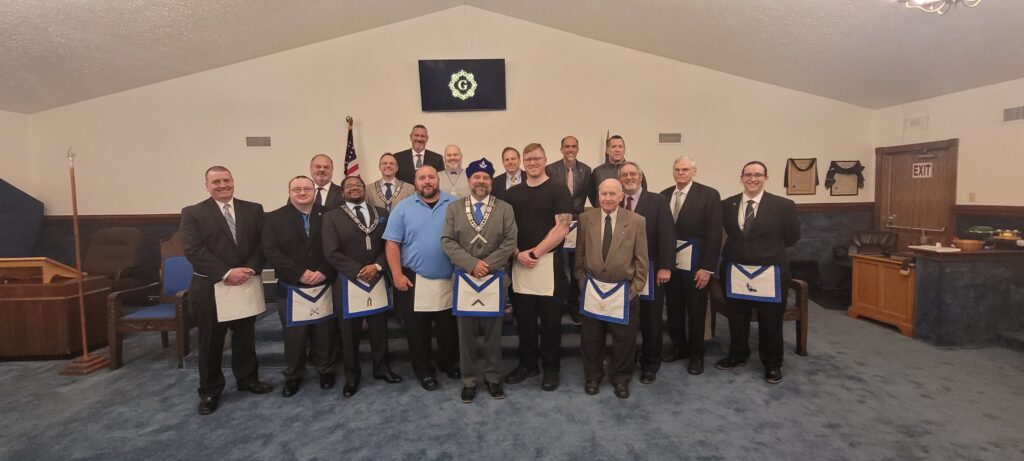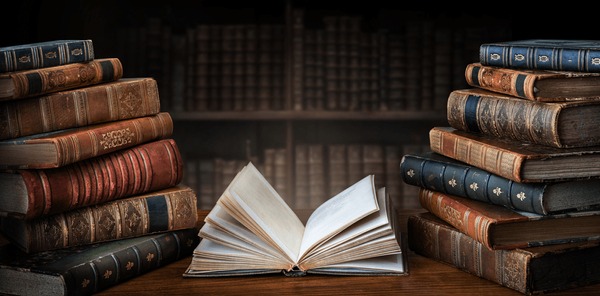Sign of Innocence
In 1784, General Marquis de Lafayette presented President George Washington with a Masonic apron during a visit to the President’s estate, Mount Vernon. It is believed the gift, exquisitely embroidered in silk and gold- and silver-threads, depicts Masonic symbols, such as the square and compasses, and the crossed flags of the United States and France, was made by Madame Lafayette, the general’s wife. While this can’t be confirmed through historical documentation, the affection these Brothers held for one another is well documented.
Other famous Freemasons like Winston Churchill and former President Harry Truman were also known to have well-decorated aprons, as they were highly involved in the craft. Masonic aprons have continued to hold high rank from our early beginnings as a fraternity to modern day.
Freemasons are well known for our regalia, but few items are as cherished amongst our brethren as our aprons. An apron also commonly called the “badge of a Mason,” is the first gift a new Brother receives, and serves to remind us of our connection to the craft and of our fraternity’s symbolic association with the working stonemasons of old. These items are often passed down between generations of Freemasons, from father to son, uncle to nephew, and so on. Even among those family members who are not in the craft, inherited aprons from a loved one are cherished.
The history of aprons
According to the Museum of Freemasonry, which is associated with the United Grand Lodge of England, Freemasons have worn aprons since the first symbolic lodge began at least three centuries ago. But the ritual and practical use of aprons predates our fraternity by centuries, and they are even referenced in The Book of Genesis in the Old Testament.
Before Freemasons donned their ritualistic aprons, the stonemasons wore aprons to protect their clothing from wear and dust. Unlike the ones we wear to Lodge, the original aprons worn by operative masons were made of leather and large enough to cover the wearer from chest to ankles. As the number and size of stonemasons’ guilds grew across Europe, they attracted others who sought the supportive community provided by the lodge.
As a result, men who were not stonemasons joined the lodge and became known as “accepted” or “speculative” Masons while the craftsmen adopted the moniker of “free” Masons. Together they became known as the “Free and Accepted” Masons from which modern Freemasonry has descended. Over time, the apron evolved from the utilitarian garment of the stonemasons to the symbolic garment worn by Freemasons. It is thought that ornate aprons emerged as a way for speculative Freemasons to distinguish themselves from the operative stonemasons.
The Meaning of the Freemason’s Apron
Today, the Masonic apron is perhaps the greatest symbol of Masonic tradition and history. The early Freemasons adopted the tools and traditions of stonemasons, among them the protective aprons, to represent a Freemason’s labor of building their lives at spiritual temples. It also serves as a symbolic connection to the operative Masons from which our fraternity arose and is a visual emblem of membership.
The unadorned white apron an Entered Apprentice receives after completing the first degree represents innocence and upright conduct. It is symbolic of the purity and innocence men are expected to pursue in life as a Freemason. Albert Mackey, the famous Masonic historian who wrote of the apron in the Encyclopedia of Freemasonry remarked that it is the first symbol explained to a new Brother and the first evidence of his commitment to the Fraternity.
Above all else, a Freemason’s apron represents his pride and commitment to the Craft and brethren.



